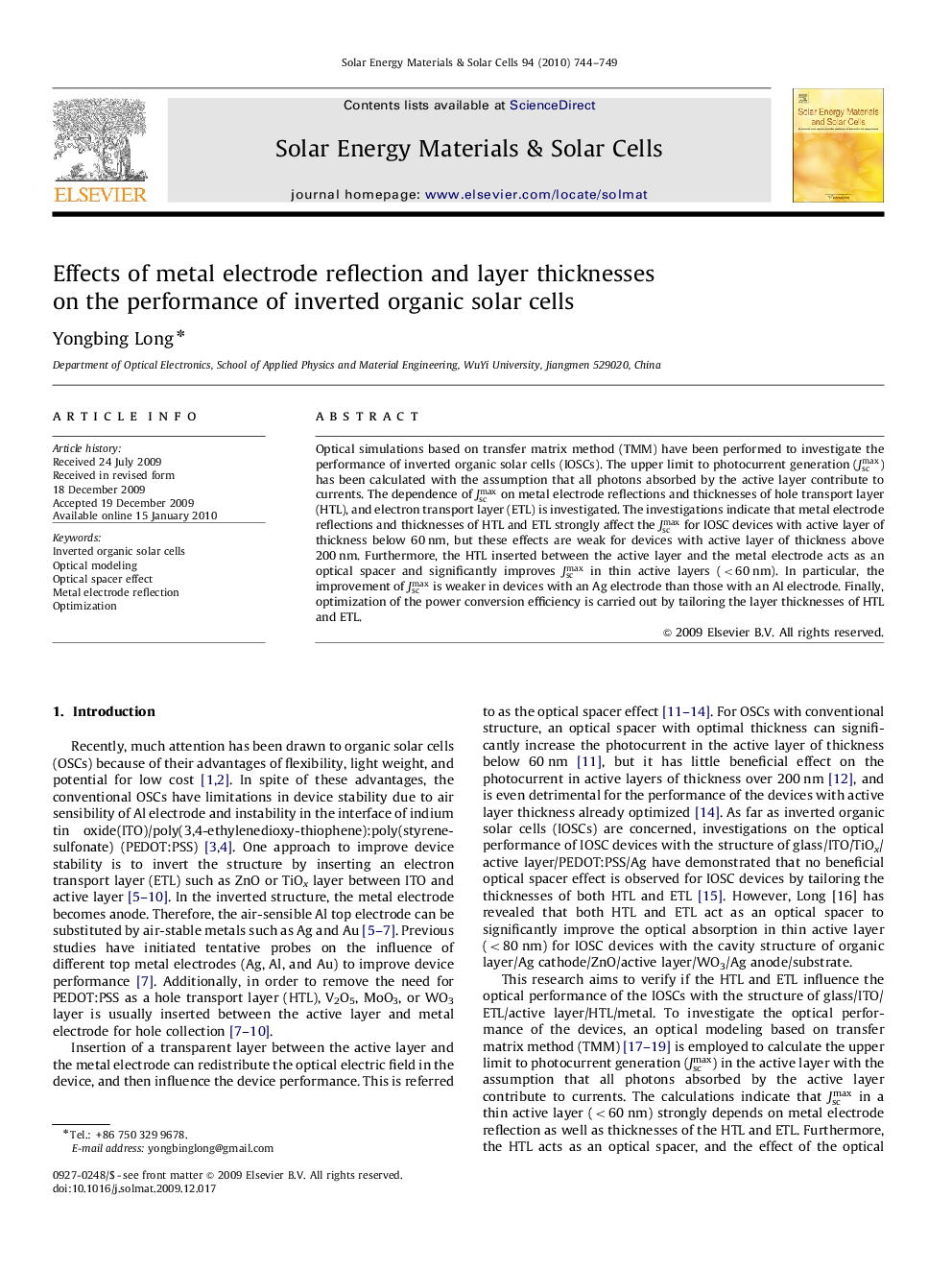| Article ID | Journal | Published Year | Pages | File Type |
|---|---|---|---|---|
| 80086 | Solar Energy Materials and Solar Cells | 2010 | 6 Pages |
Optical simulations based on transfer matrix method (TMM) have been performed to investigate the performance of inverted organic solar cells (IOSCs). The upper limit to photocurrent generation (Jscmax) has been calculated with the assumption that all photons absorbed by the active layer contribute to currents. The dependence of Jscmax on metal electrode reflections and thicknesses of hole transport layer (HTL), and electron transport layer (ETL) is investigated. The investigations indicate that metal electrode reflections and thicknesses of HTL and ETL strongly affect the Jscmax for IOSC devices with active layer of thickness below 60 nm, but these effects are weak for devices with active layer of thickness above 200 nm. Furthermore, the HTL inserted between the active layer and the metal electrode acts as an optical spacer and significantly improves Jscmax in thin active layers (<60 nm). In particular, the improvement of Jscmax is weaker in devices with an Ag electrode than those with an Al electrode. Finally, optimization of the power conversion efficiency is carried out by tailoring the layer thicknesses of HTL and ETL.
